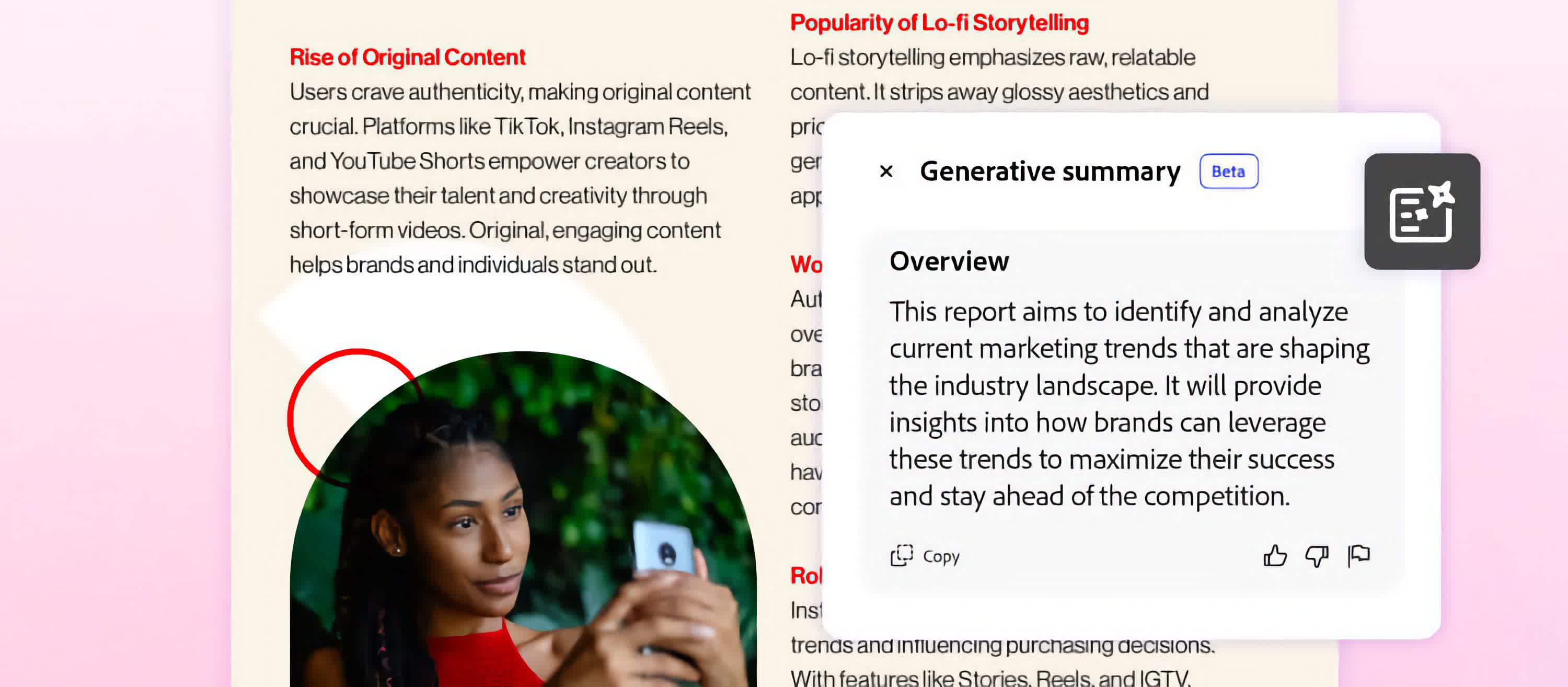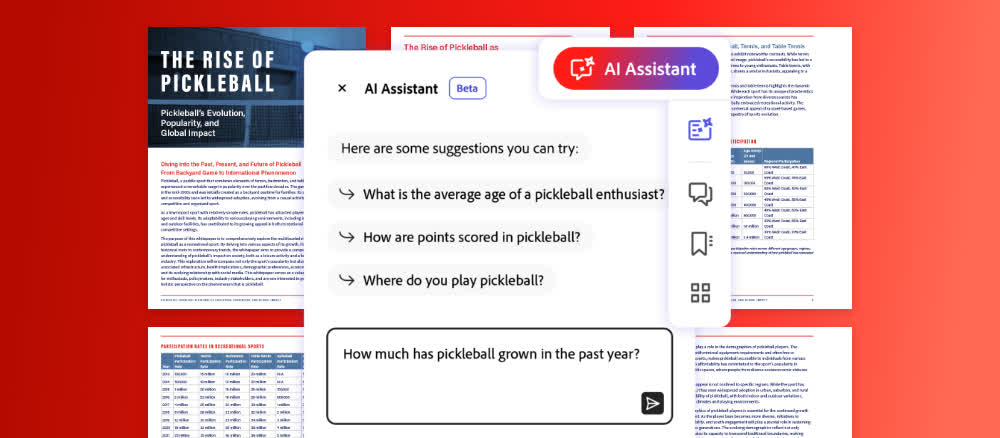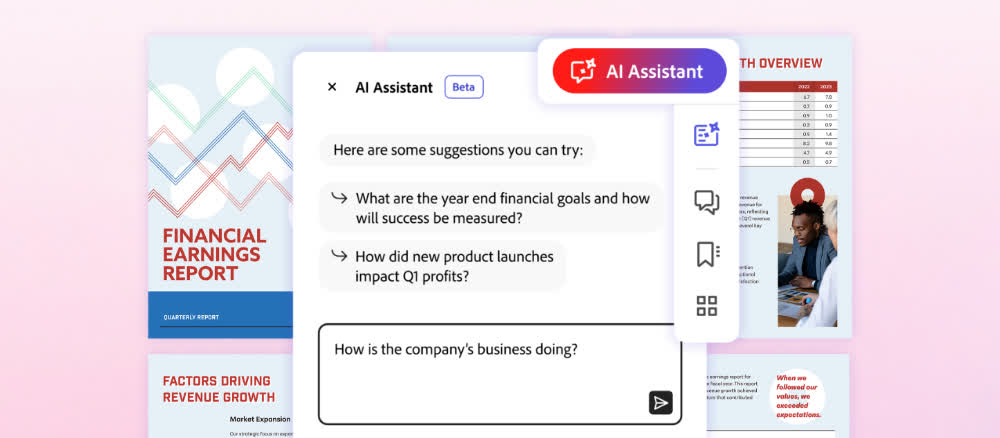What just happened? With PDFs being the preferred format for documents used by organizations, it shouldn't come as too much of a surprise to learn that Adobe has launched an artificial intelligence assistant for its Reader and Acrobat applications. Adobe says the AI can generate summaries and insights from long documents, answer questions, and format the information it produces.
The AI assistant, currently in beta, leverages the same artificial intelligence and machine learning models behind Acrobat Liquid Mode, the technology that supports responsive reading experiences for PDFs on mobile, writes Adobe.
The new AI is currently available for Acrobat Individual, Pro and Teams customers and Acrobat Pro trialists, with features appearing in Reader over the coming days and weeks. There's no additional cost for using the assistant – until it comes out of beta.
The assistant can scan a PDF's content, provide a short overview, and answer questions about what it contains, all using a conversational interface. Moreover, the feature can generate citations so users can easily verify the source of the AI's answers.
The AI is also able to consolidate and format information for the likes of emails, presentations, reports, and more.
While ChatGPT offers a similar service to Adobe's AI assistant, OpenAI's tool requires PDFs and other files be uploaded first, whereas Adobe's generative AI is integrated into its products.
Adobe addressed the usual concerns associated with generative AIs by noting that its assistant features are covered by data security protocols. The company emphasized that no customer document content is stored or used for training the AI assistant without their consent.
As with other AIs, users will have to sign up for a new add-on subscription plan once the assistant is out of beta. No word yet on how much Adobe plans on charging customers.
Adobe has already launched several products in the generative AI space. It introduced the Firefly generative AI last year, first as an AI image generator for apps like Adobe Express, Experience Manager, Photoshop, and Illustrator, and then to Creative Cloud apps such as Premiere Pro.


